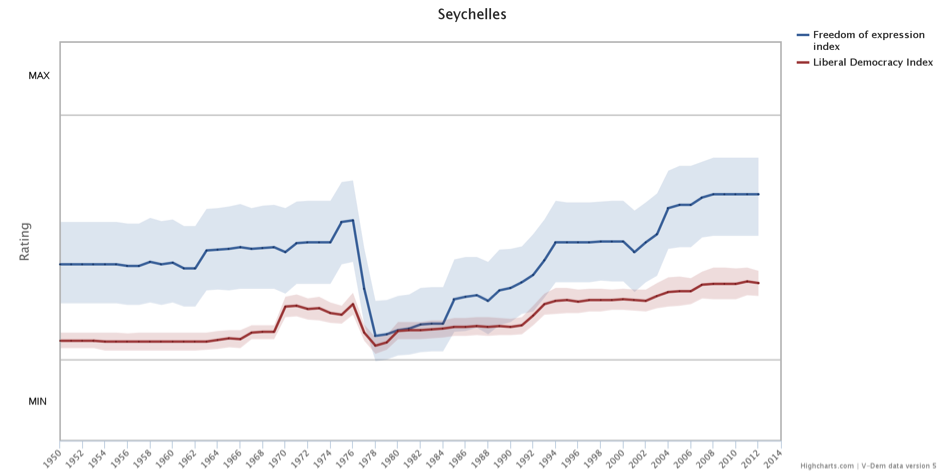Liberal democracy and freedom of expression in the Seychelles
By: V-Dem Staff
Feb 08, 2016
V-Dem offers a number of indicators and indices that measure democratization processes worldwide.
The liberal democracy index and the freedom of expression index capture two distinct aspects of democracy: the former index measures to what extent liberal democracy is achieved, conceptualized as the protection of individual and minority rights by law. The latter index measures to what extent the government respect press and media freedom, the freedom of ordinary people to discuss political matters at home and in the public sphere, as well as the freedom of academic and cultural expression. Higher values on the scale of the two indices correspond to a more democratic situation.
In this graph, the development of Seychelles from 1950 to 2014 is displayed. The Seychelles gained full independence in 1976 and was adopted into the Commonwealth. However, shortly thereafter, France Albert René came to power through a coup d’état that ousted Mancham and the country turned into a one-party socialist rule, resulting in restricted civil liberties. These events are captured by the graph, which presents a significant drop on both indices in the late1970s. René’s strongman regime lasted until 2004. However, constitutional reforms allowed a multiparty system to be installed, and René was elected in 1993. These reforms are visible as a moderate upsurge in both the liberal democracy chart and the freedom of expression index.
Since 1993, both indices have been rising slowly but steadily. The scores indicate that the Seychelles is making progress as a democratic state, but there is still room for improvement.


